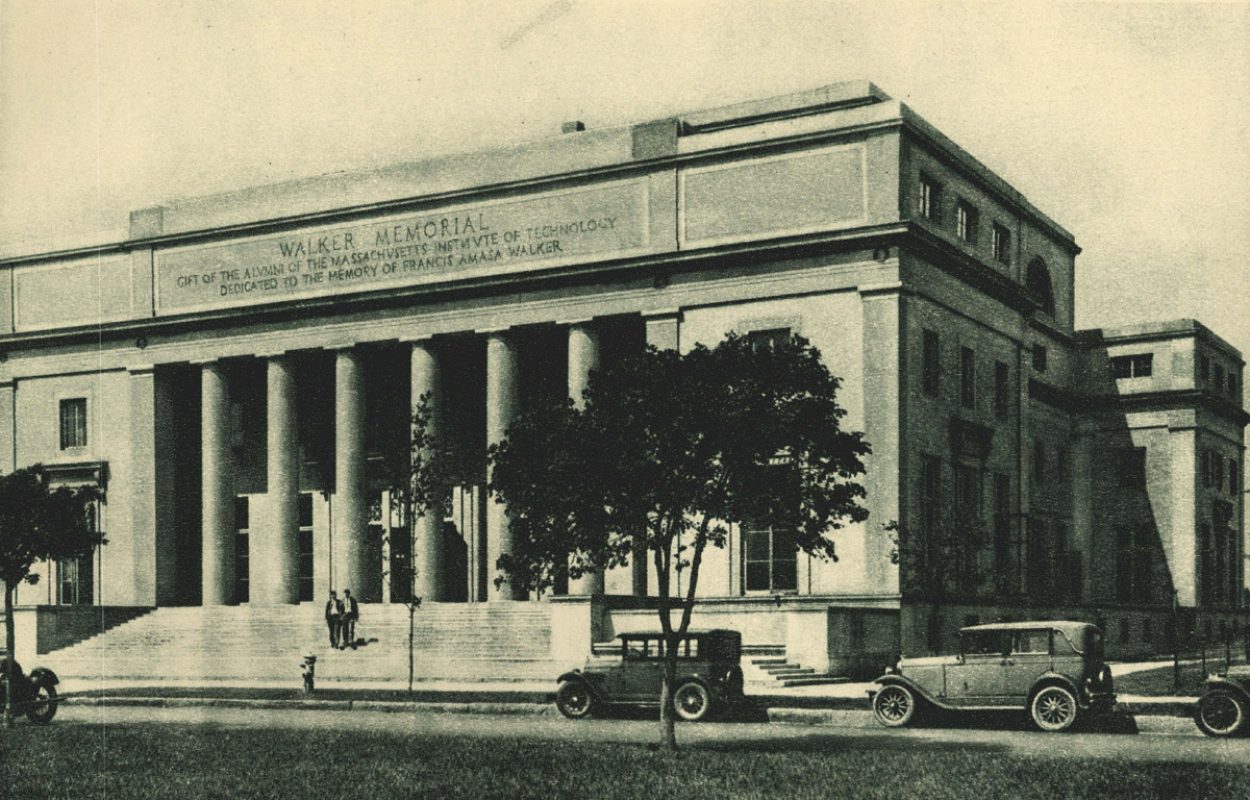MIT Servomechanisms Laboratory
Heads of the MIT Servomechanisms Laboratory
| Gordon S. Brown | 1939-1952 |
| William M. Pease | 1952-1953 |
| J. Francis Reintjes | 1953-1959; 1959-1974, Director of the successor Electronic Systems Laboratory |
The Servomechanisms Laboratory was established at MIT in 1940 under the direction of Gordon S. Brown, then assistant professor of electrical engineering. The laboratory grew out of the Department of Electrical Engineering’s increasing attention in the fall of 1939 to servomechanisms, specifically fire control (gun-positioning instruments) in response to a request from the U.S. Navy for a special course for naval fire control officers assigned to MIT. Harold Hazen, head of the department, was also Gordon Brown’s doctoral advisor and asked him to develop the course. The 1939 MIT Course Bulletin lists for the first time two elective classes (6.605 and 6.606) titled Theory and Applications of Servo Mechanisms with Gordon S. Brown as instructor.
During World War II the laboratory’s teams of research scientists and graduate students (who also produced thesis projects from their work) undertook research and development of feedback control systems for the U.S. government (Navy Ordnance, Army Ordnance, and the National Defense Research Committee) as well as commercial contractors. Research included servo-control systems for advanced radar used on U.S. Navy ships. Laboratory director Gordon Brown served as a consultant to the Sperry Gyroscope Company as well as to the War Department.
After World War II ended in 1945, the laboratory’s newly created dynamic analysis and control group, directed by Albert C. Hall, continued to develop automated control systems for U.S. Navy guided missiles. In 1946 this group separated to form the Dynamic Analysis and Control Laboratory at MIT until closing in 1958.
Early laboratory research, originating in 1944 as the ASCA (Aircraft Stability and Control Analyzer) project to develop a flight training simulator, was directed by Jay W. Forrester with the assistance of Robert R. Everett. The research focus was revised in 1946 to include the design and construction of a high-speed digital computer, and the project was renamed Project Whirlwind. In 1951 Project Whirlwind and its staff were separated from the Servomechanisms Laboratory and assigned to the newly created Digital Computer Laboratory, still under the direction of Forrester. Eventually the Whirlwind group became division 6 of the newly formed Lincoln Laboratory and the Whirlwind technology was applied to Lincoln Laboratory’s air defense system.
Other major postwar efforts of the Servomechanisms Laboratory included the development of automatic controls for the reactor rods and instrumentation system of the first peacetime nuclear reactor, constructed in the late 1940s by the Atomic Energy Commission at the Brookhaven National Laboratory.
A significant postwar project that began in 1949 and continued and evolved through the 1950s was the work that led to numerical control of machine tools. Under a contract with the Parsons Company of Michigan, William M. Pease and James O. McDonough designed an experimental numerically-controlled milling machine which received directions through data on punched paper tape. The first working model of a continuous-path numerically-controlled milling machine was demonstrated in 1952. Further research was then carried out under the sponsorship of the U.S. Air Force. Subsequently, the laboratory’s Computer Application Group, led by Douglas T. Ross, developed the Automatically Programmed Tool Language (APT), an easy-to-use, special purpose programming language. Eventually, APT became the world standard for programming computer-controlled machine tools. The Servomechanisms Laboratory staff actively promoted the introduction and use of numerical control for industrial processes. It sponsored conferences and summer sessions aimed at industry personnel. The development of numerical controls had a profound impact. The introduction of automated controls revolutionized the machine tool industry. In 1958, further development of the APT system was turned over to a coordinating group sponsored by the Aircraft Industries Association.
Research activities of the Servomechanisms Laboratory broadened in the late 1950s, and a decision was made in 1959 to change the name of the laboratory to the Electronic Systems Laboratory. The laboratory continued to report to the Department of Electrical Engineering until March 1978, when it became an inter-departmental laboratory reporting to the provost. In September 1978 it was renamed the Laboratory for Information and Decision Systems (LIDS).
The records of the Servomechanisms Laboratory (AC 151) are available for research in the Institute Archives and Special Collections. Detailed accounts of the research activities of the Servomechanisms Laboratory can be found in the following publications:
Burchard, John E. Q.E.D.: M.I.T. in World War II. New York: J. Wiley, 1948.
Reintjes, J. Francis. Numerical Control: Making a New Technology, by New York: Oxford University Press, 1991.
Wildes, Karl L. A Century of Electrical Engineering and Computer Science at MIT, 1882-1982. Cambridge, Mass.: MIT Press, 1985. Chapter 14.
Prepared by the Institute Archives, MIT Libraries
September 2004
